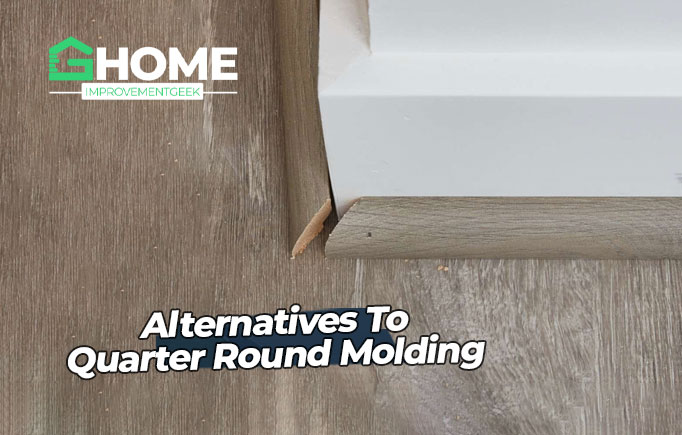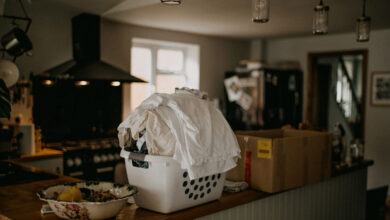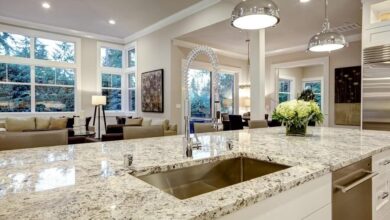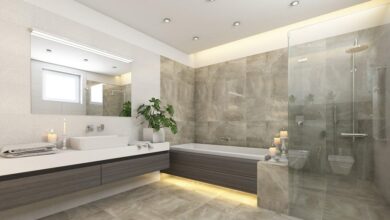Quarter Round Alternatives: Creative Molding Options

Are you looking for a way to add a touch of personality and style to your home’s baseboards and trim designs? Look no further than alternative molding options, including quarter round alternatives, baseboard alternatives, and trim options. These creative molding options can add a modern flair and unique style to your interior design, transforming any room into a personalized space that reflects your taste. In this article, we will explore innovative quarter round alternatives and other non-traditional moldings for baseboards, modern trim styles, and different materials that can be used for molding. Plus, we’ll provide expert tips and techniques for seamless installation to achieve a professional look. Let’s dive in!
Non-Traditional Moldings for Baseboards
If you’re looking for a modern and unique touch for your baseboards, consider stepping away from traditional quarter round moldings and exploring the world of non-traditional options. With decorative corner trims and a variety of creative molding alternatives available, you can easily add a fresh and personalized look to your home.
Decorative Corner Trims
Decorative corner trims, also known as outside corners, add dimension and texture to your baseboards. They come in different shapes, sizes, and patterns to suit your personal style, ranging from sleek and modern to more ornate designs. Some popular options include elegantly curved trims or carved patterns that resemble foliage and other natural elements.
Non-Traditional Molding Options
When it comes to non-traditional molding options, the possibilities are endless. For example, you can use coved molding, which has a concave curve, to create a seamless transition between the wall and ceiling. Alternatively, you can opt for picture rail molding, which consists of a narrow strip of wood installed horizontally along the wall, just below the ceiling, which can be used to hang artwork without putting nail holes directly into the wall. Other popular non-traditional molding options include panel molding, dentil molding, and beadboard molding.
Modern Trim Styles
When it comes to elevating the aesthetics of your home, modern trim styles can make all the difference. From unique baseboard designs to innovative molding ideas, exploring different molding types can give your space a sophisticated and elevated look.
Quarter round: This is a small, angled piece that fills the gap between the floor and the baseboard. It’s a traditional and familiar style that can also be used in a more modern context.
Shoe molding: This molding style has a similar purpose to quarter round, but it’s more substantial. It’s often used to cover up the gap between the floor and the baseboard and is larger in size.
Baseboard: Baseboards come in a myriad of styles and sizes. From simple and modern to more traditional looks, this molding style can add depth and elegance to your space.
| Molding Type | Pros | Cons |
|---|---|---|
| Quarter round | -Small and unobtrusive -Classic look |
-Can be difficult to install -Not suitable for all design styles |
| Shoe molding | -Larger than quarter round -Covers gap between floor and baseboard effectively |
-Not as traditional as quarter round -May not fit all design aesthetics |
| Baseboard | -Comes in many styles and sizes -Adds depth and elegance to a space |
-May require professional installation -Can be more expensive than other molding types |
Ultimately, the molding style you choose will depend on your personal preferences and design style. But keeping an open mind and exploring different modern trim styles can lead to exciting and transformative changes in your home’s aesthetics.
Installing Alternative Moldings
When it comes to installing alternative moldings, there are a few key tips and techniques to keep in mind. Whether you have carpet or hardwood floors, proper installation will ensure a seamless and professional look that complements your interior design.
Preparing for Installation
Before you begin installing alternative moldings, it’s important to prepare your space. Remove any existing quarter round or baseboards and ensure that the surface is clean and smooth. If you’re installing over carpet, use a carpet knife to trim the carpet down to the subfloor so that the molding can be attached securely.
Measuring and Cutting
Once your surface is prepped and ready, the next step is to measure and cut your molding to the appropriate size. Use a tape measure to ensure accuracy and mark your cuts with a pencil. Cut the molding at a 45-degree angle to create tight, aesthetically pleasing corners.
Attaching the Molding
When attaching the molding, use a nail gun to secure it in place. If you’re installing over carpet, consider using adhesive on the back of the molding to ensure a tight and secure fit. Additionally, use a level to ensure that the molding is straight and evenly spaced.
Finishing Touches
After your molding is attached, use wood filler to fill in any gaps or holes, sand it down smooth, and finish with a coat of paint or stain for a polished final look.
With these tips and techniques, you can confidently install alternative moldings that add a unique and modern touch to your home’s interior design.
Creative Uses for Quarter Round Alternatives
Quarter-round molding is a versatile and stylish trim option that can work wonders for any room in your home. While its traditional use is along the baseboards and corners, quarter round has endless potential as a decorative element. Here are some creative ways to use quarter round alternatives:
- As wall decor: Turn your quarter round into geometric patterns for a unique and modern look.
- As picture frames: Wrap quarter round around the edges of plywood for an inexpensive and original picture frame.
- As light fixtures: Cut quarter round into strips and assemble them together to create a one-of-a-kind light fixture.
- As a plant stand: Stack quarter round into a pyramid shape and attach it to the wall to create a plant stand.
Exploring Different Molding Styles
Quarter round alternatives can come in different styles that can add sophistication and style to any interior design. Here are some popular molding styles:
| Molding Style | Description |
|---|---|
| Baseboard Molding | Baseboard molding is used to transition between the floor and the wall. It comes in various shapes and sizes to suit your design needs. |
| Chair Rail Molding | Chair rail molding is installed at the height of a chair, usually 36 inches from the floor, to protect the wall from chair-back scuffs and add a decorative touch. |
| Crown Molding | Crown molding is installed where the wall meets the ceiling to add a decorative touch and make the room look more elegant. |
| Shoe Molding | Shoe molding is installed at the bottom of baseboards to create a smooth transition between the baseboard and the floor. |
Installing Shoe Molding
When using shoe molding instead of quarter round, it is important to follow the correct installation process to achieve a professional result. Here are some tips to help with the installation process:
- Start by removing the quarter round using a pry bar and hammer.
- Measure and cut the shoe molding to the desired length using a miter saw or hand saw.
- Attach the shoe molding to the baseboard using a nail gun or hammer and nails.
- Fill in the nail holes and any gaps between the shoe molding and the baseboard with caulk.
In conclusion, quarter round alternatives can add flair and personality to any space in your home. Whether you choose to use it as a decorative element or explore different molding styles, there are endless creative possibilities to transform your space.
The Difference Between Shoe Molding and Quarter Round
If you’re not familiar with shoe molding and quarter round, you might assume they’re the same thing because they look very similar. However, there are actually some key differences between the two.
First of all, shoe molding is generally smaller and thinner than quarter round. It typically measures about 1/2 inch by 3/4 inch, whereas quarter round is usually around 3/4 inch by 3/4 inch. This smaller size allows shoe molding to fit into tighter spaces, making it a good choice for areas where you want the baseboard to sit closer to the wall.
| Shoe Molding | Quarter Round |
|---|---|
| Smaller, thinner | Larger, thicker |
| Designed to sit closer to the wall | Designed to cover larger gaps |
| Cost-effective | Slightly more expensive than shoe molding |
Another difference between the two is their purpose. Shoe molding is typically used to cover the gap between the flooring and the baseboard, while quarter round is more versatile and can be used to cover larger gaps and inconsistencies in the wall.
When choosing between shoe molding and quarter round, consider the size of the gap you need to fill, the space you’re working in, and your budget. Shoe molding is generally a more cost-effective option, while quarter round is slightly more expensive but more versatile.
Instead of quarter round, shoe molding can give your baseboards a unique look and sleek finish. Ultimately, the choice between the two comes down to personal preference and the specific needs of your project.
Tips for Installing Shoe Molding
Installing shoe molding doesn’t have to be a daunting task. With the right tools and technique, you can achieve a professional result and enhance the overall look of your space. Follow these practical tips to ensure a seamless installation:
- Remove the quarter round: If your baseboards have been previously outfitted with quarter round, you’ll need to remove it before installing shoe molding. Use a pry bar and hammer to gently remove the quarter round from the wall, taking care not to damage the baseboards or walls.
- Measure the space: Use a tape measure to determine the length of the walls where you’ll be installing shoe molding. This will help you determine the amount of molding you’ll need to purchase.
- Cut the molding: Use a miter saw to cut the shoe molding to the appropriate length. Be sure to measure each piece carefully to ensure a perfect fit.
- Test the fit: Once you’ve cut the shoe molding, test the fit against the baseboards. If the molding doesn’t fit perfectly, use a sanding block to remove any rough edges or adjust the cut as needed.
- Attach the molding: Use a nail gun to attach the shoe molding to the baseboards, taking care not to damage the wall or molding. Start at one end of the wall and work your way down, spacing the nails every 12 inches or so.
- Caulk the seams: Once the shoe molding is attached, use a caulk gun to fill in any gaps between the wall and molding. Smooth the caulk with a damp cloth or your finger for a clean finish.
With these tips, you’ll be able to install shoe molding like a pro and achieve a polished and professional look in no time.
Alternative Molding Materials
When looking for materials for your alternative molding project, consider the pros and cons of each option. PVC is a popular choice as it is low maintenance, moisture-resistant, and comes in a variety of colors and styles. It is also easy to install and budget-friendly.
Medium-density fiberboard (MDF) is another material commonly used for molding due to its affordability and versatility. It can be painted to match any decor style and is resistant to warping, splitting, and shrinking. However, it is also prone to moisture damage and is not as durable as solid wood options.
| Materials | Pros | Cons |
|---|---|---|
| Solid Wood | Durable, long-lasting, and adds warmth and elegance to any space. | Expensive compared to other options, prone to warping and splitting, and requires regular maintenance. |
| Laminate | Budget-friendly, easy to install, and available in a variety of styles and finishes. | Not as durable as solid wood options, prone to chipping and peeling, and not moisture-resistant. |
The table above outlines the pros and cons of solid wood and laminate materials. Solid wood options are a great choice for those looking for a durable, long-lasting option that adds warmth and elegance to any space. However, it is a more expensive choice compared to other options and requires regular maintenance. Laminate is a budget-friendly material that is easy to install and available in a variety of styles and finishes, but it is not as durable as solid wood and is prone to chipping and peeling.
Consider the characteristics of each material and choose the one that best fits your needs and budget for a successful molding project.
Creative Molding Designs and Styles
Adding molding to your home can elevate the aesthetics of any room. Crown molding, one of the most popular molding styles, is suitable for almost every room. It helps to make ceilings appear taller and rooms appear more polished. Window trim options, on the other hand, can add an elegant finish while highlighting the natural light pouring into your home. Door trim styles can enhance the overall look of your beautiful doors and windows, making them stand out.
| Molding Style | Description |
|---|---|
| Crown molding | Designed for the transition from ceiling to wall, adding a sophisticated look to any room. |
| Window trim | Decorative molding used to frame windows, providing a polished finish while highlighting natural light. |
| Door trim | Molding used to enhance the overall look of your doors and windows, making them stand out. |
When selecting molding styles, consider the overall theme of your home, existing elements, and textures. Custom molding styles can add depth to your interior design by incorporating unique shapes and sizes, or even mixing different styles. By stepping out of the box and getting creative, you can identify the perfect molding style for your home that will enhance your space’s aesthetics.
Tips for a Seamless Installation
Installing alternative moldings can be a rewarding and creative project. Follow these expert tips to ensure a flawless installation:
- Use a tape measure accurately to measure the length of the molding precisely.
- Choose the right nail gun for your project, and use it to secure the molding to the wall.
- Apply caulk properly to fill in any gaps between the molding and the wall.
By following these simple yet essential tips, you’ll achieve a seamless installation that adds style and sophistication to your space.
Molding Alternatives for Specific Spaces
When it comes to molding options, there are many different styles and designs that can complement specific spaces and design aesthetics. Below are some examples of molding alternatives that work well in different areas of the home:
Farmhouse-Inspired Moldings
For a cozy and rustic farmhouse look, consider using shiplap or beaded board as a baseboard alternative. These materials can be painted white or a natural wood tone to create a timeless and inviting feel in your space.
Craftsman Trim Options
If your home has a craftsman style, consider using flat or square trim as an alternative to traditional quarter round moldings. This will help emphasize the clean lines and geometric shapes that are characteristic of this design style.
Taller Moldings for Counters and Other Areas
To add drama and depth to areas like kitchen counters or bathroom vanities, consider using taller moldings like baseboard or panel molding. This will create a more formal and sophisticated look in your space.
By exploring different molding alternatives and styles that work well in specific spaces, you can create a truly customized and personalized look that reflects your unique aesthetic preferences.
Conclusion
Alternative molding options provide endless possibilities for adding style and flair to your home’s baseboards and trim designs. By exploring quarter round alternatives and thinking outside the box, you can achieve a unique and personalized look that enhances your space.
From creative molding designs and styles to unique materials and installation tips, this article has provided a comprehensive guide to help you transform your home’s interior design. Whether you’re looking to add drama to your counters, create a farmhouse-inspired look, or simply enhance the overall aesthetics of your space, alternative molding options can help you achieve your goals.
Remember to consider the pros and cons of each molding type and material, and follow expert tips for a seamless installation. With a little creativity and a willingness to step away from traditional quarter round options, you can achieve a modern and unique look that perfectly reflects your personal style.




